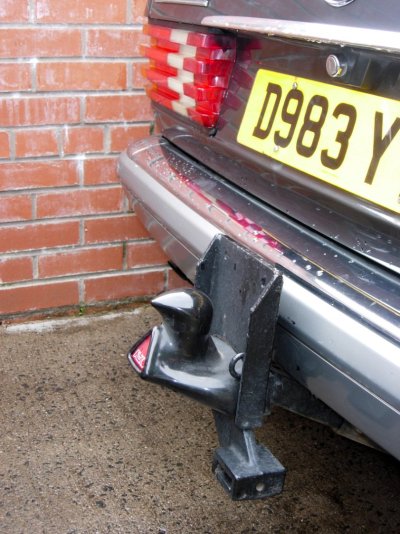The 1998 cut off date is all important and the material you are referencing is wrong ; new legislation CANNOT be retrospectively applied to pre existing vehicles ; there are so many examples , I already mentioned seatbelts not being required on pre 1964 cars , earlier cars can also have white front indicators and red rear ones ; no need to have speedometers calibrated in both mph/kph ( my Ponton , being a 1957 car had KPH only , this was perfectly legal for a car of that age ) ; pre 1960 there is no standard for emissions ( only that there is no visibly excessive smoke ) ; no requirement for any exterior mirrors , so also exempts you from towing mirrors ; go back even further and you need only have a single tail lamp and single brake lamp , plus no requirement for indicators at all since you could give hand signals ; and of course the earliest cars had rear brakes only .
People have been caravanning since at least the 1920s , and you cannot impose later legislation on earlier vehicles if it did not exist when they were new . It does not mean that earlier vehicles cannot be used to tow when they always could in the past . there actually are clubs of enthusiasts for vintage ( 1920s ) cars and caravans who go on excursions , towing 100 year old caravans with 100 year old cars , virtually all of which will not meet many of the present day legislation , but they can , because they are exempt from it .
Legislation evolves with technology , but it is a fundamental principle that new legislation cannot be imposed on older vehicles . Go into VOSA and look at the MOT tester's manual , there are literally hundreds of exemptions on all manner of things as they apply to older vehicles .
Sadly , those sites you have mentioned fail to take account of exemptions for older vehicles , but they are just plain wrong , and it is their failure .
You pretty much admitted the point when you stated that "
The pre 1998 stuff is irrelevant... the only difference is after that date they had to show those weights on the car.....the law still applies ref GTW. " by implication , before that date there was NO REQUIREMENT to show any weights on the car ; therefore that does not bar them from towing - in days pre 1998 one went by the handbook - the absence of a plate did not mean a car could not tow ; there WERE cars that could not tow , even before 1998 - the Ford Ka comes to mind , but the plate is irrelevant because the manufacturer stated the car was not suitable for towing anything at all .
















